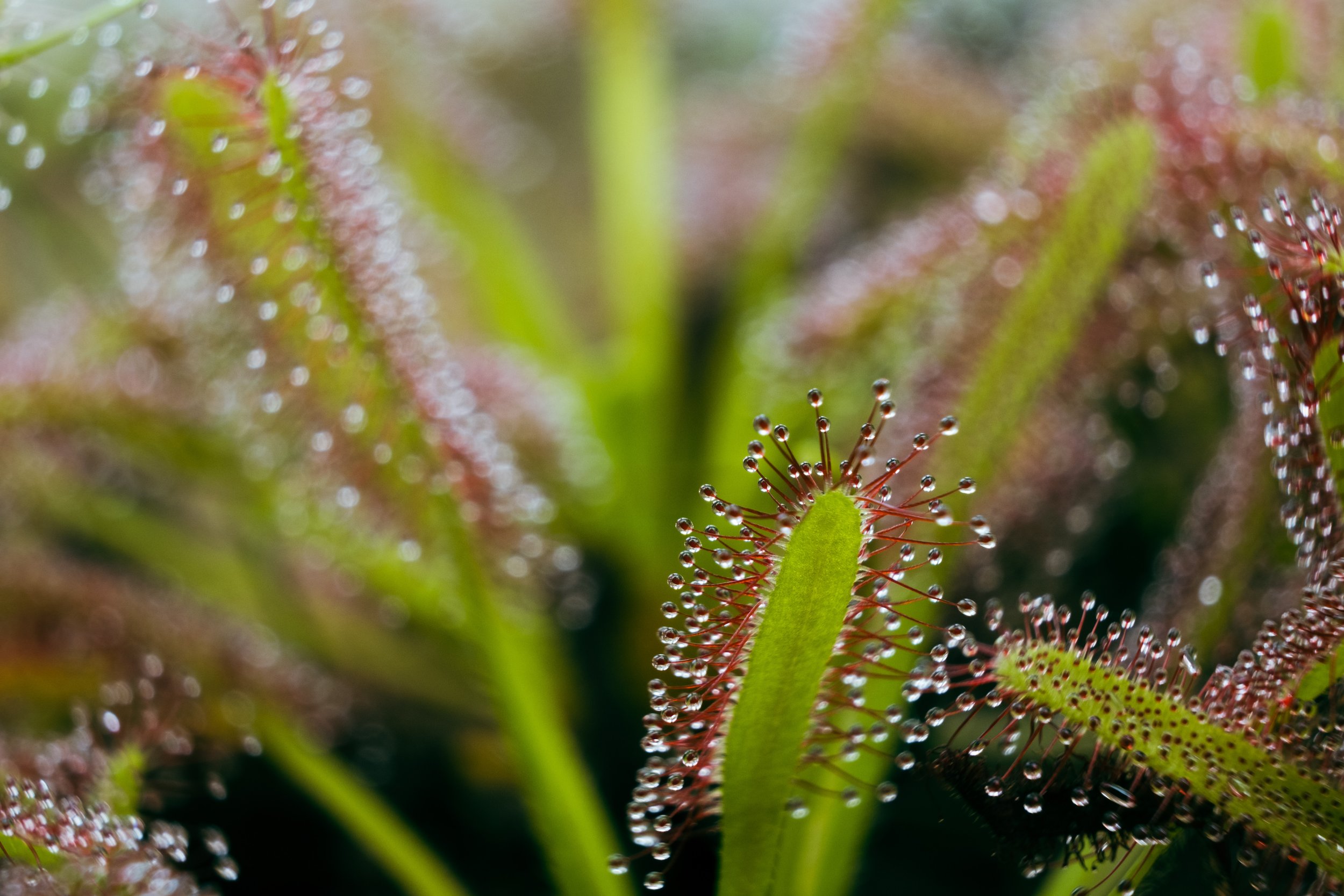America's Wildest Wildflowers
The National Audubon Society Wildflowers of North America -- a classic guidebook for nature lovers -- has been updated this year, and some of the entries are eyebrow-raisers, for sure.
Consider these curious wildflower entries, for example:
Roundleaf Sundew: With its alien looks, this carnivorous wildflower is the stuff of nightmares for insects. Hair-like tendrils on leaves are tipped with sugary, sticky droplets that unsuspecting insects mistake for nectar. Once a mosquito, fly, or gnat zips in for a sweet morsel, they’re trapped by the stickiness. The tendrils detect when insects are caught, and the leaf slowly wraps around its prey, engulfing it and digesting it with enzymes.
Skunk Cabbage: Skunk cabbage is one of the few plants capable of generating heat. In late winter, its burgundy-purple flower hood melts its way through snow-covered ground. Inside the flower, air is heated 36 to 63 degrees warmer than the ambient temperature, creating a cozy hang-out for early-season pollinators. The flower scent is a cross between a skunk and rotting flesh. Combine the stink with the warmth, and this flower is fly heaven. In their little bug brains, flies think they’ve found a carcass perfect for egg laying, so they come zipping in and end up pollinating the blooms. When the weather warms, bright green leaves appear, growing to 3 feet. The inedible leaves contain calcium oxalic crystals, which cause a burning sensation if eaten.
Black Swallow-Wort: With names like swallow-wort and dog-strangling vine, this plant grows aggressively, readily entwining itself in nearby plants to the point of smothering or strangling them. In fact, its growth is so thick that it renders electric fences ineffective. Black swallow-wort actually hails from Europe and was introduced to U.S. gardens as an ornamental plant. It escaped cultivation in the mid-1860s near Boston and has made its way from coast to coast.
Blue Fiesta Flower: This pretty purple bloomer could be called the Velcro wildflower because its stems, leaves, and flower bases have backward-pointing bristles that stick to animal fur or fabric. In the era of the Spanish ranchos, women wore these flowers on their dresses for decoration -- taking advantage of the plant's natural stickiness -- which gave rise to the name blue fiesta flower.
Ghost Pipe: Because ghost pipe lacks chlorophyll, it doesn’t need sunshine to grow but thrives in the deepest, darkest forests where it finds nutrition by connecting with underground fungi and tree roots. As tree leaves feed their roots through photosynthesis, they nourish the roots of ghost pipe, too. Also known as Indian pipe, this plant produces one 3- to 9-inch-tall stem topped with a white- or pinkish-white bell-shaped flower. It’s the same flower shape as a blueberry, which is a botanical cousin to ghost pipe. This spooky wildflower turns black if picked, so it’s best enjoyed in its native habitat.
When we find ourselves overwhelmed by our own circumstances, don't forget to look to God's creation for both astounding complexities and even humor. As we read in John 1:3, "Through him all things were made; without him nothing was made that has been made." When we open our eyes to perceive the world anew, God undoubtedly will surprise us, shining his light across the shadows.
Blessings on your week,
Jennie

